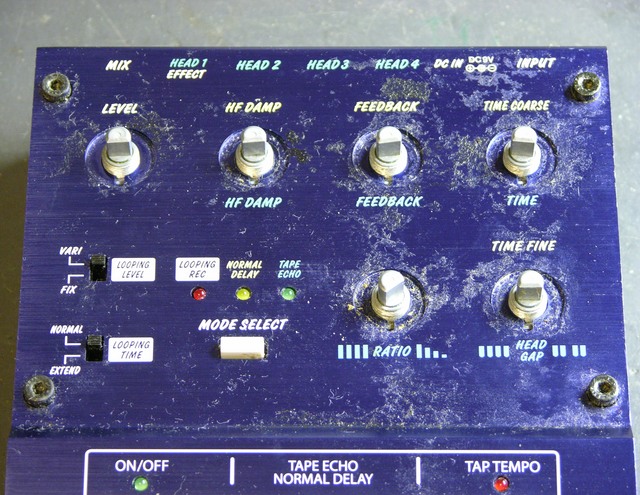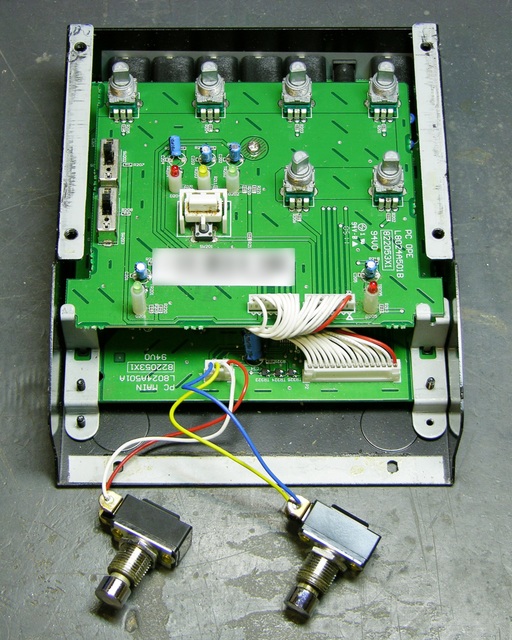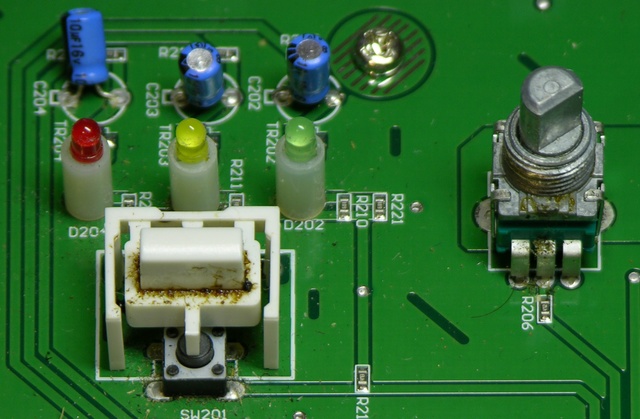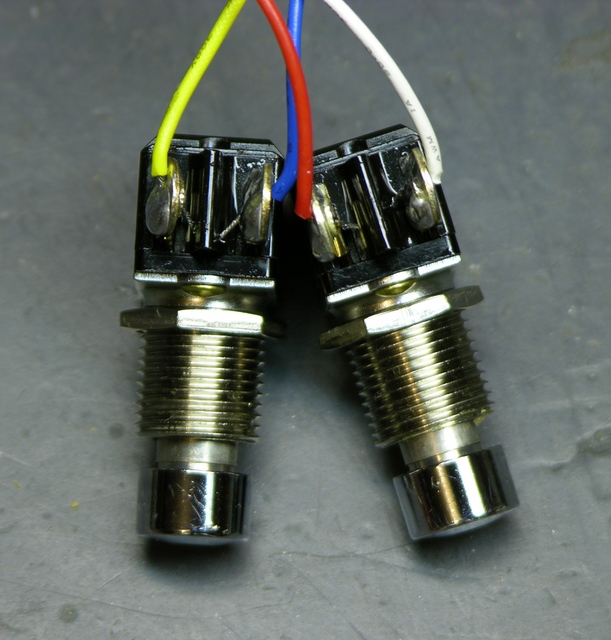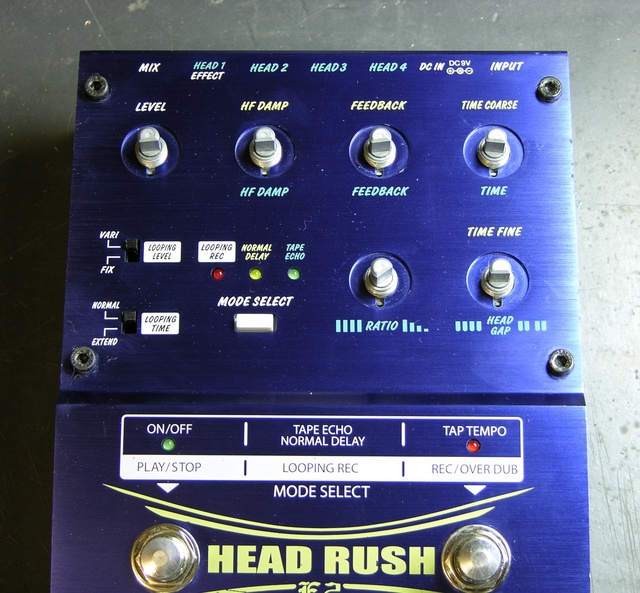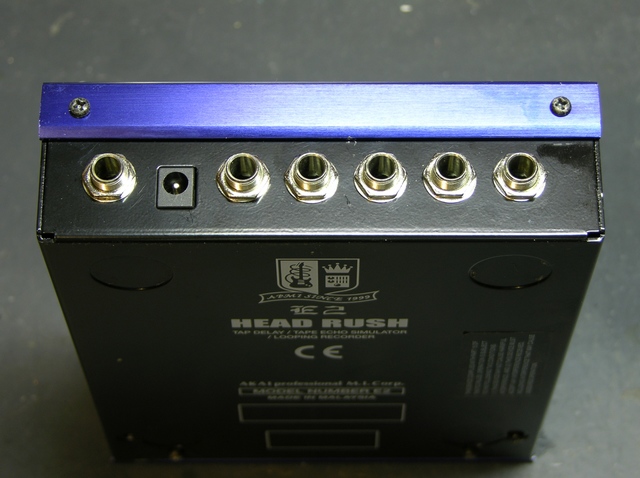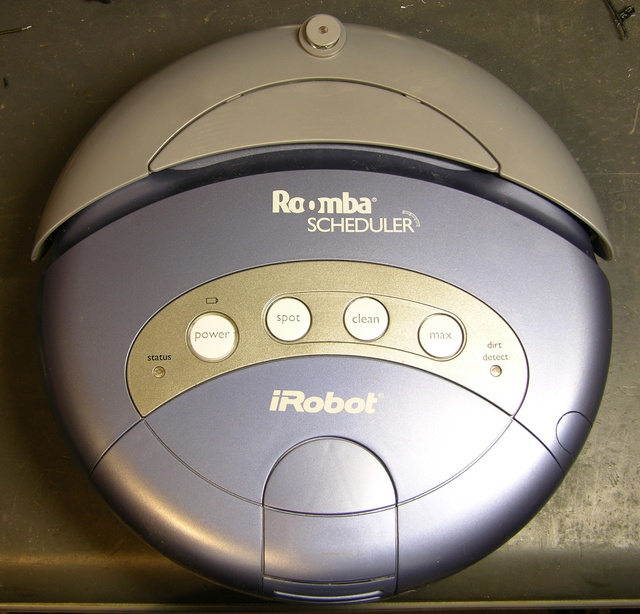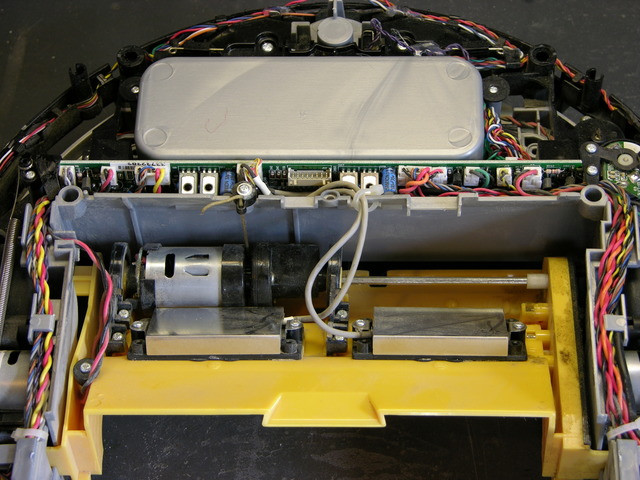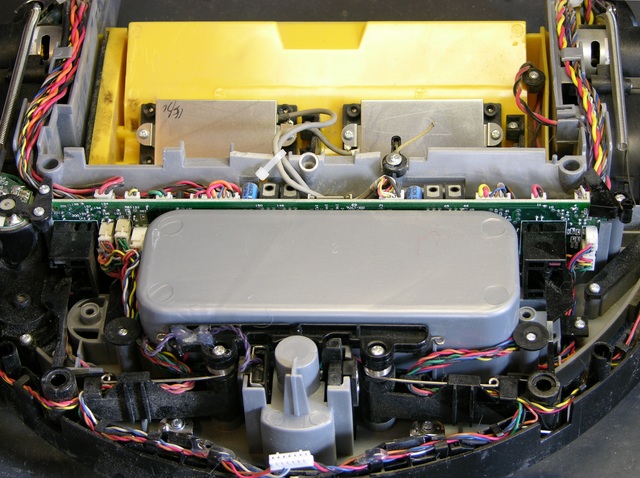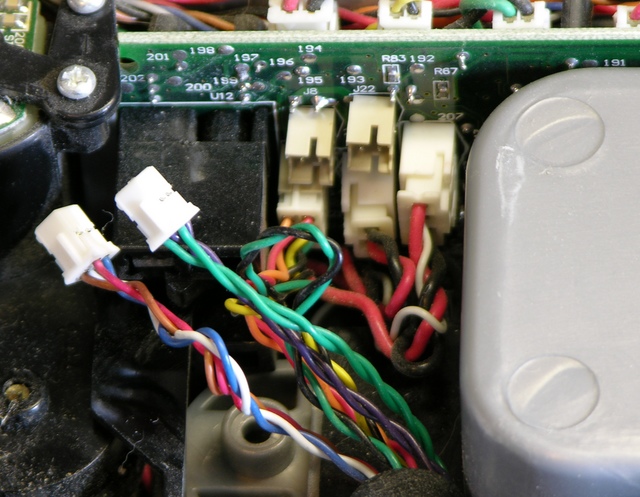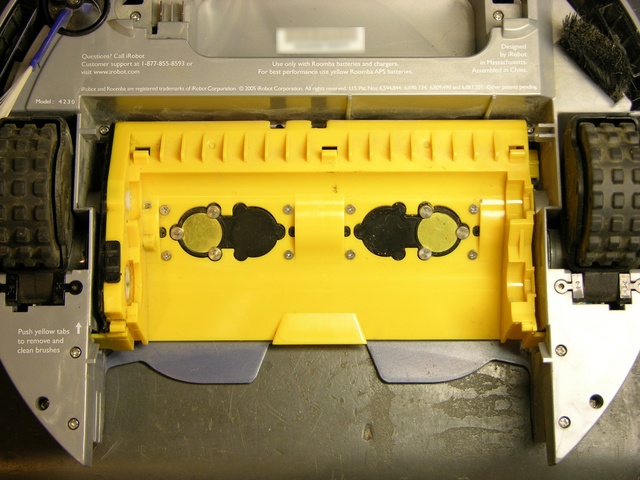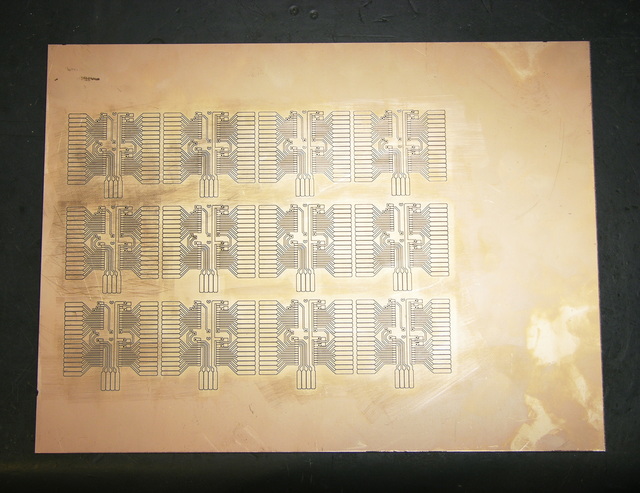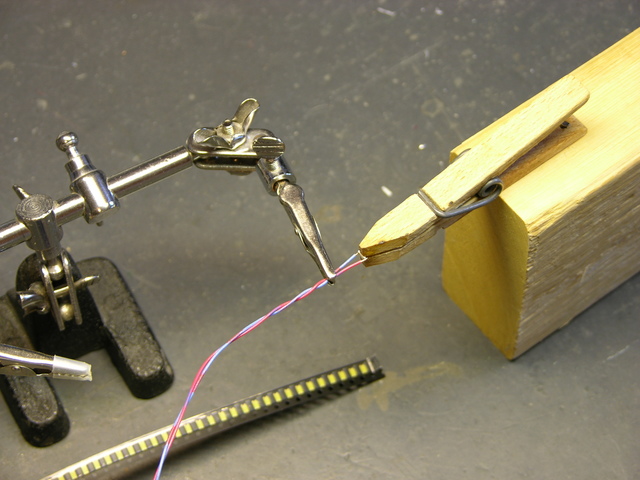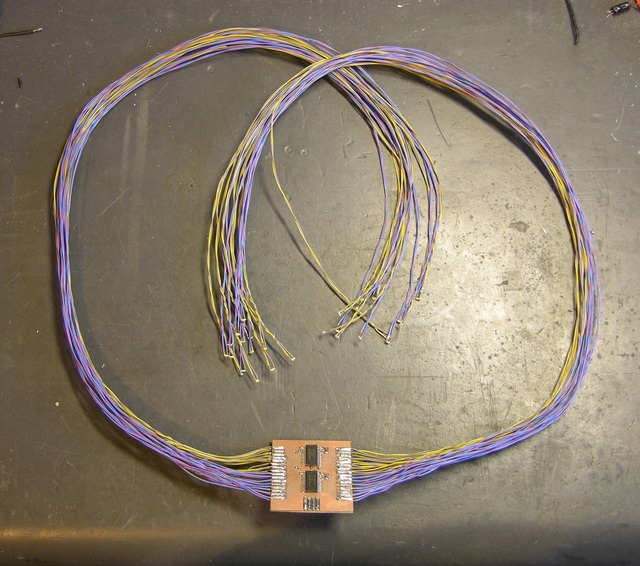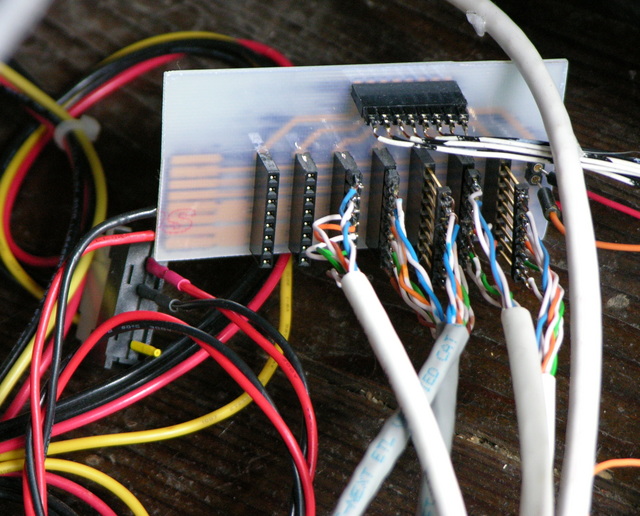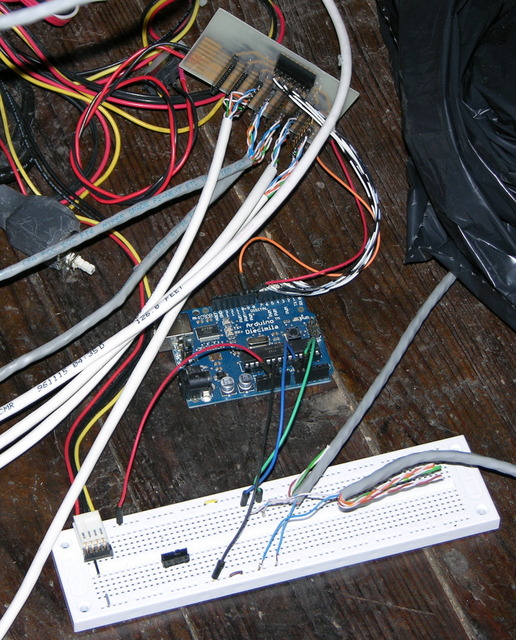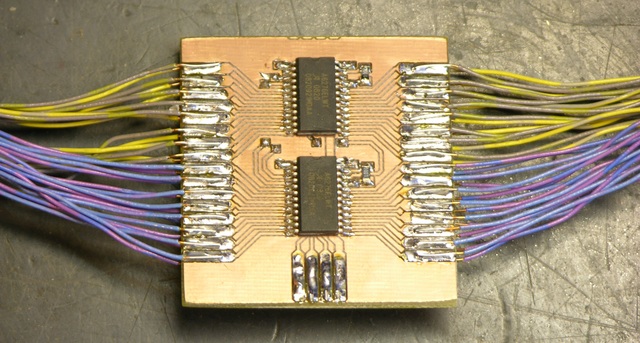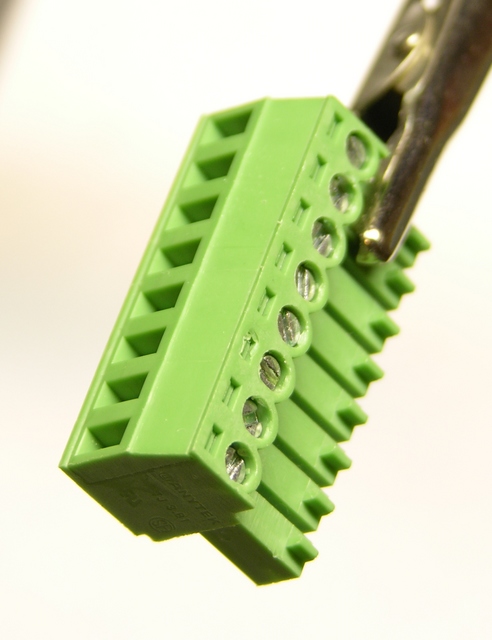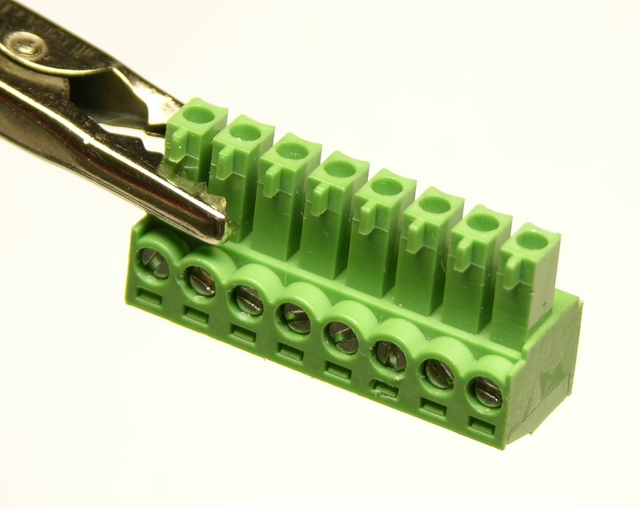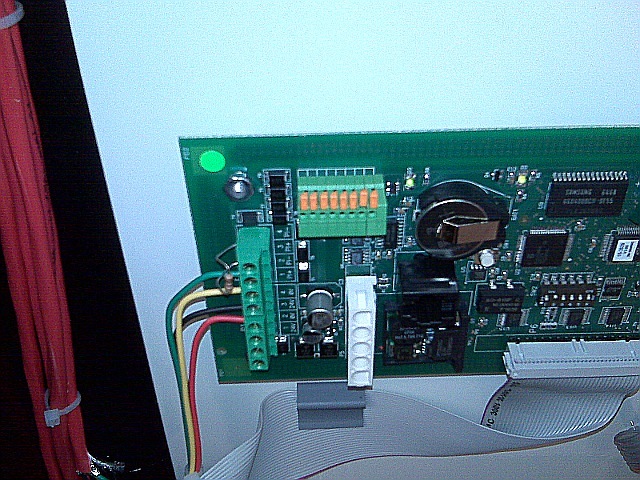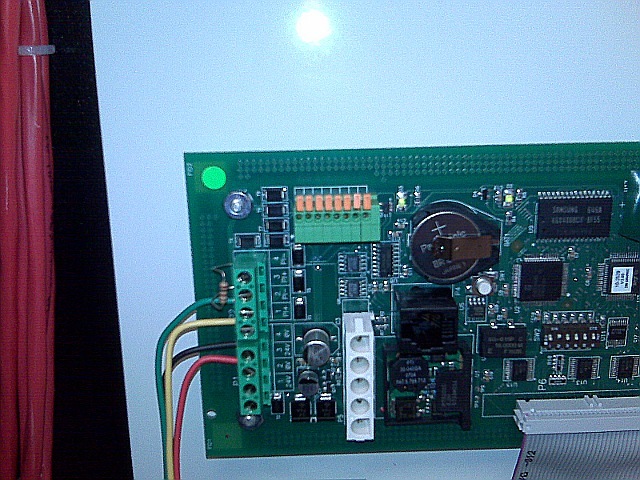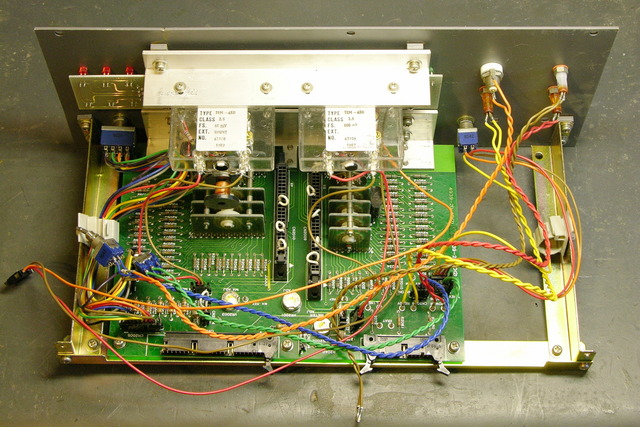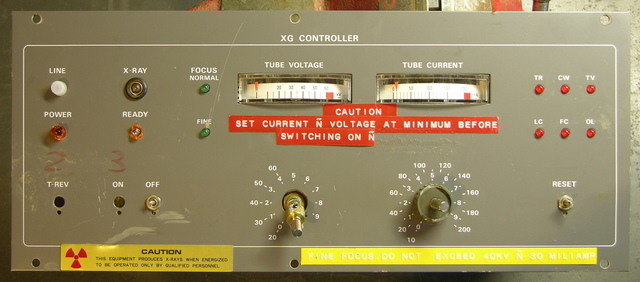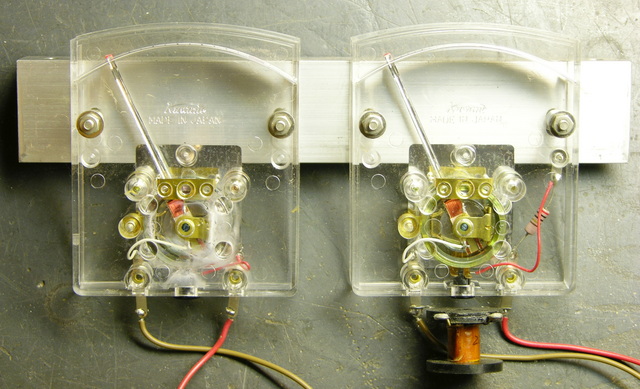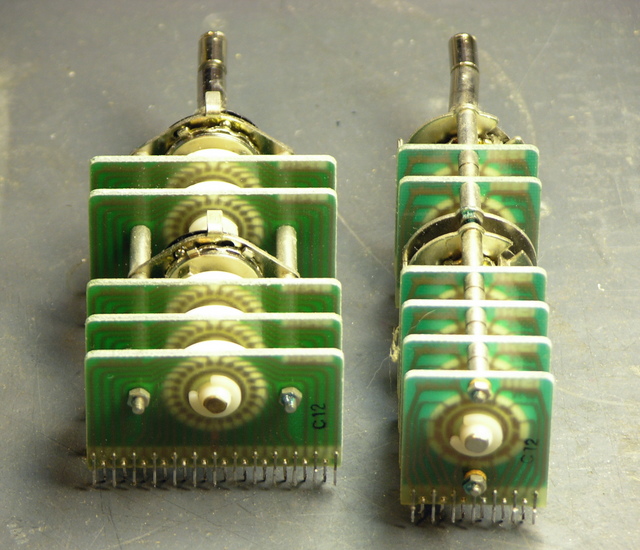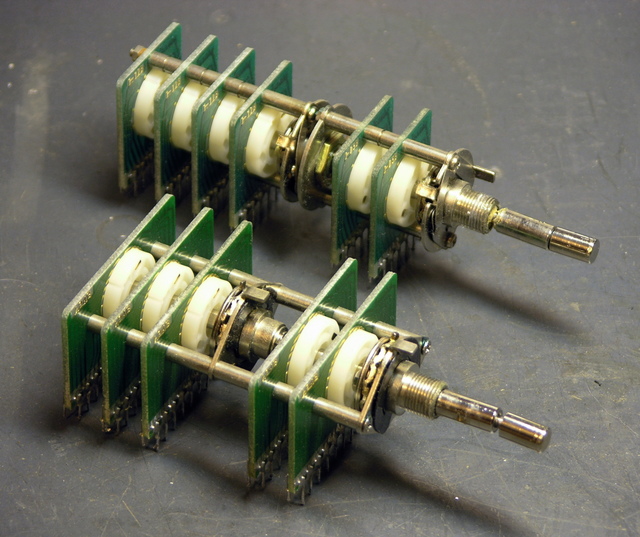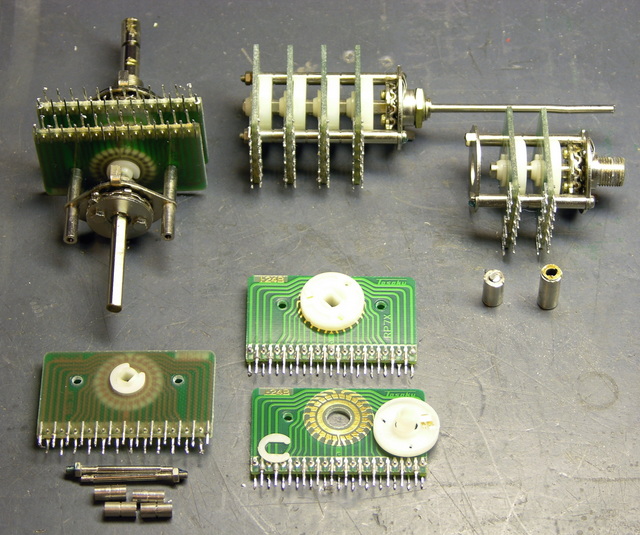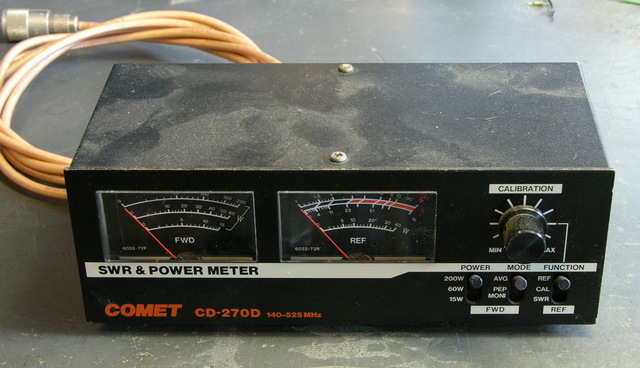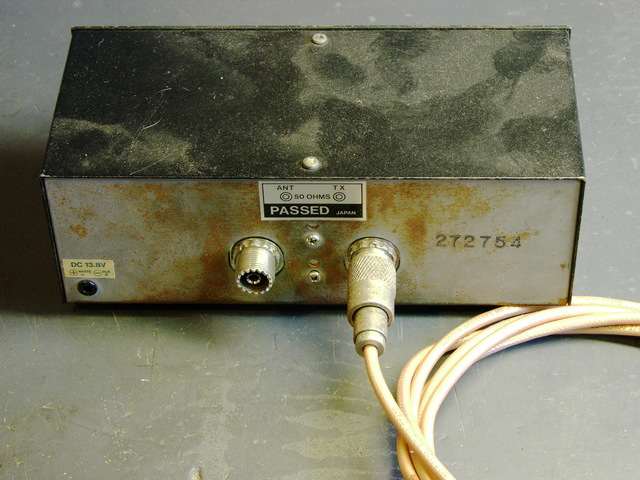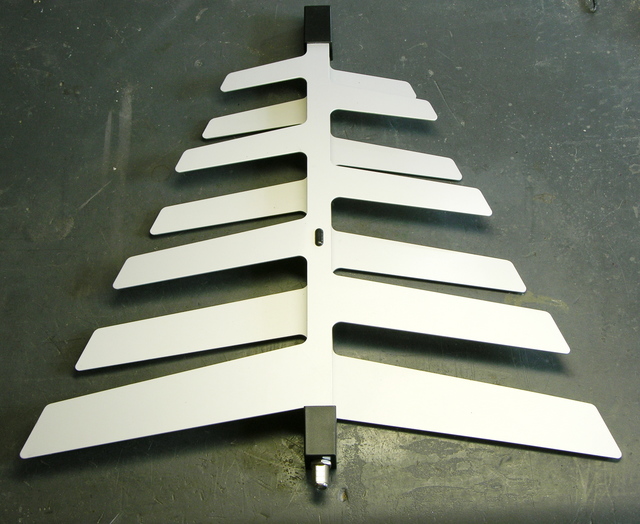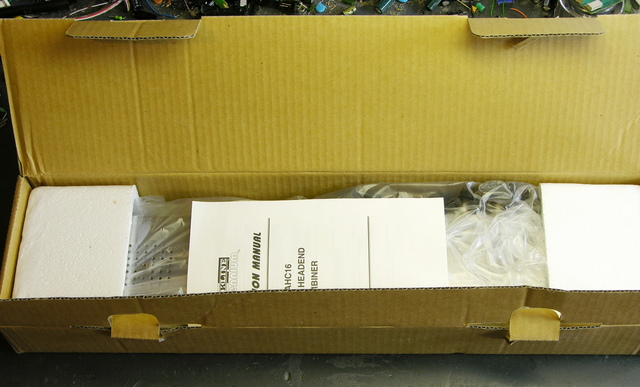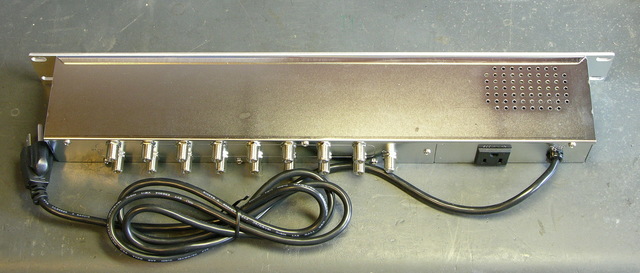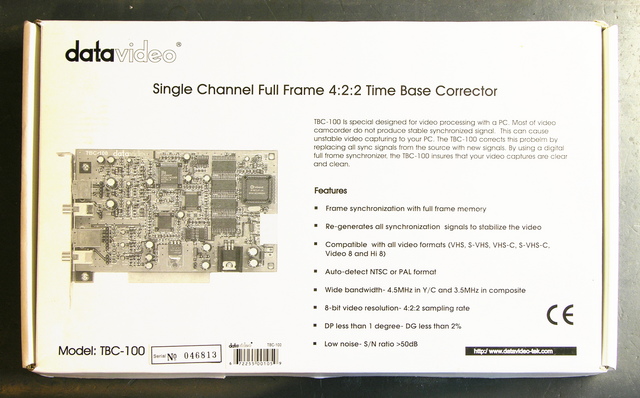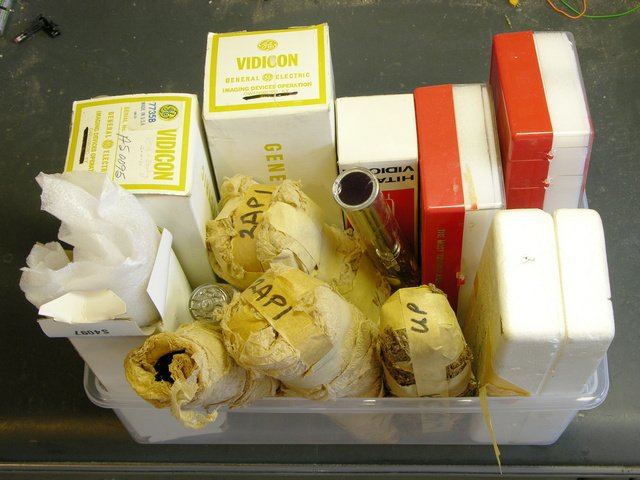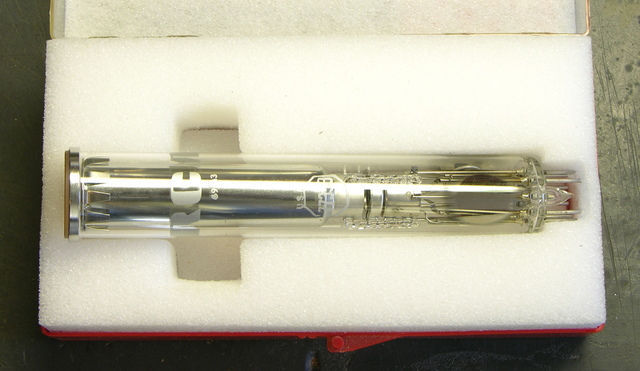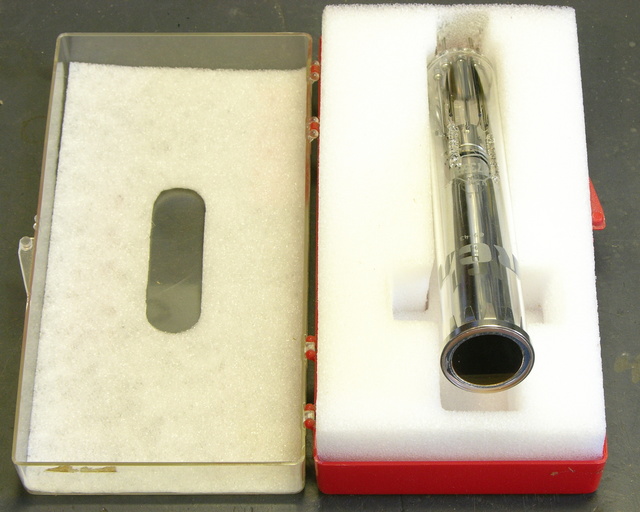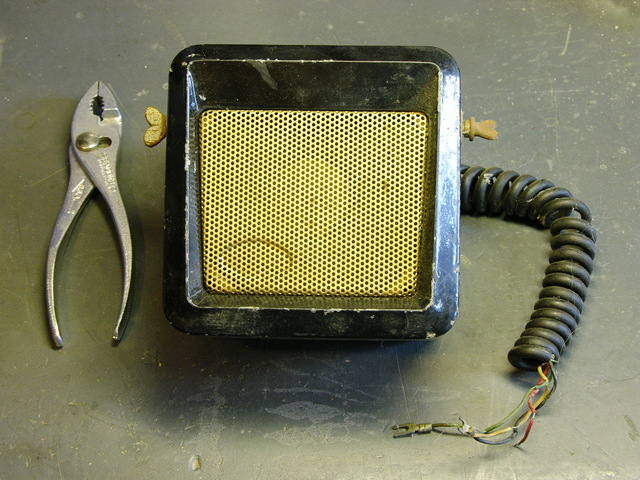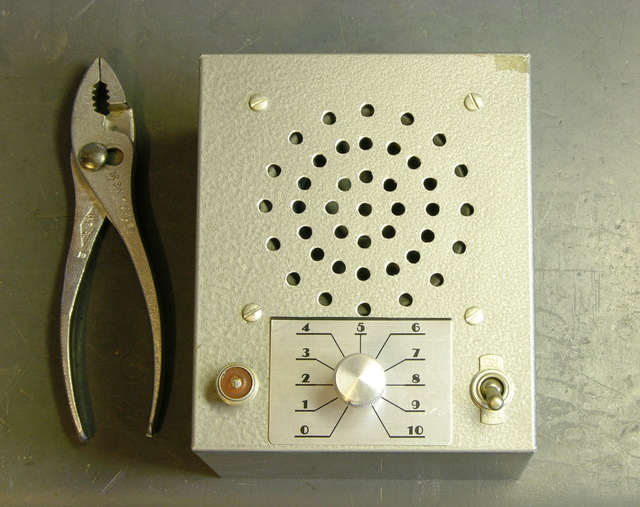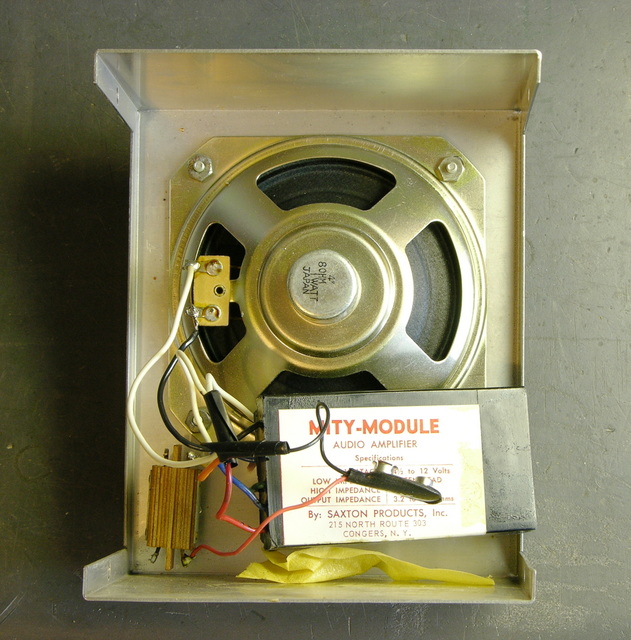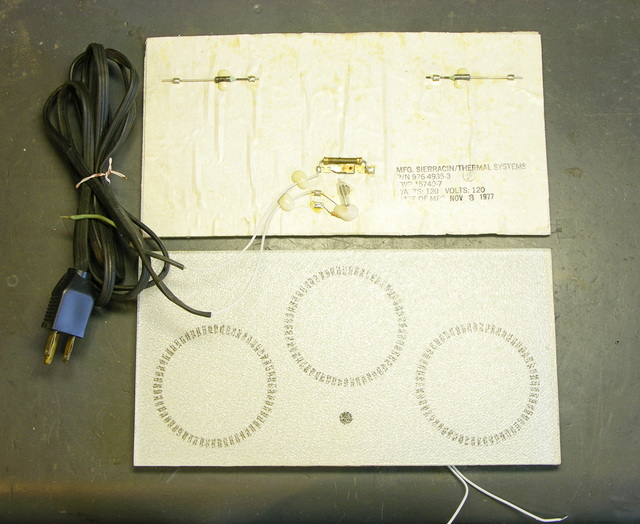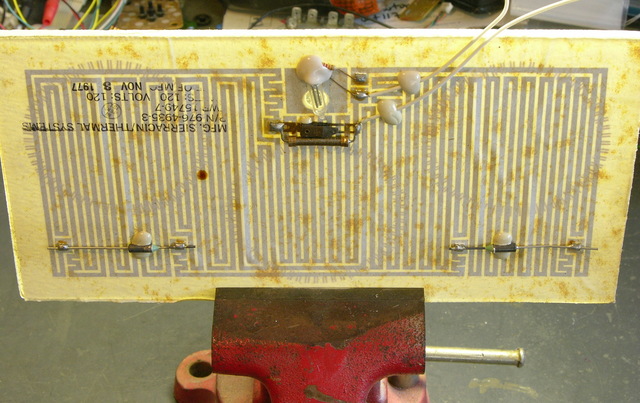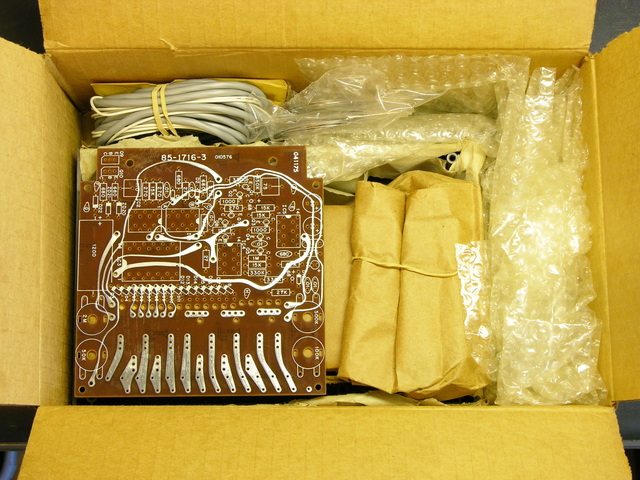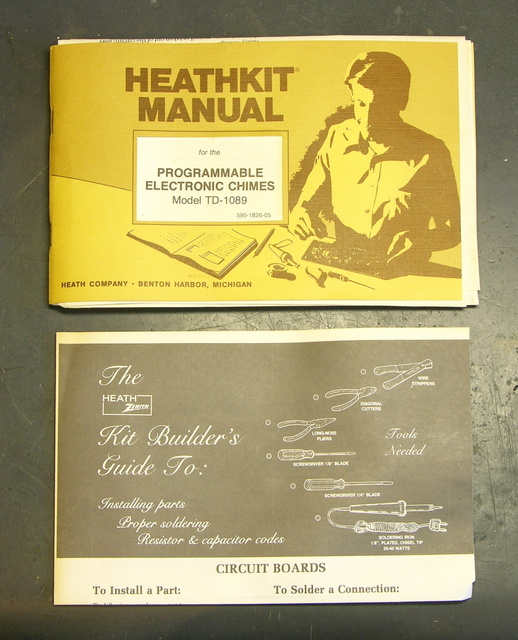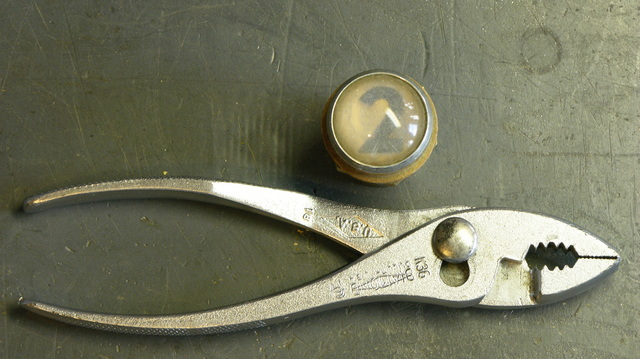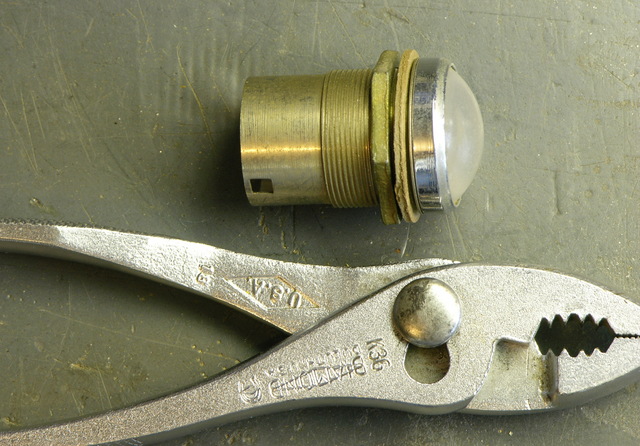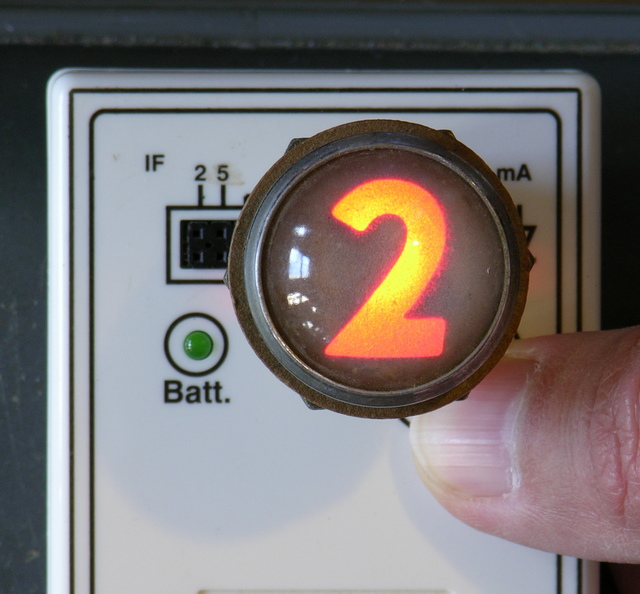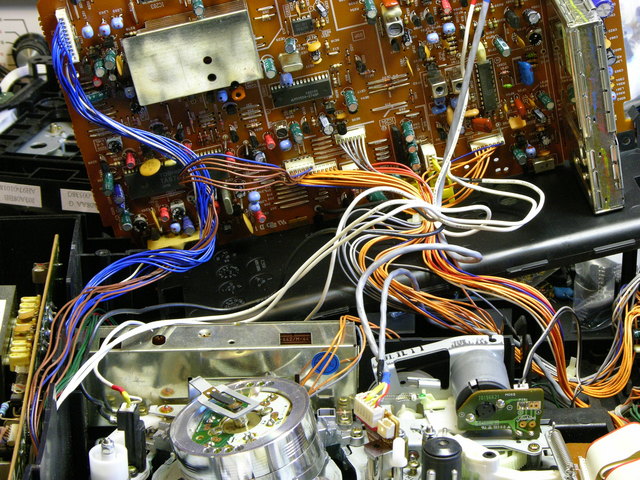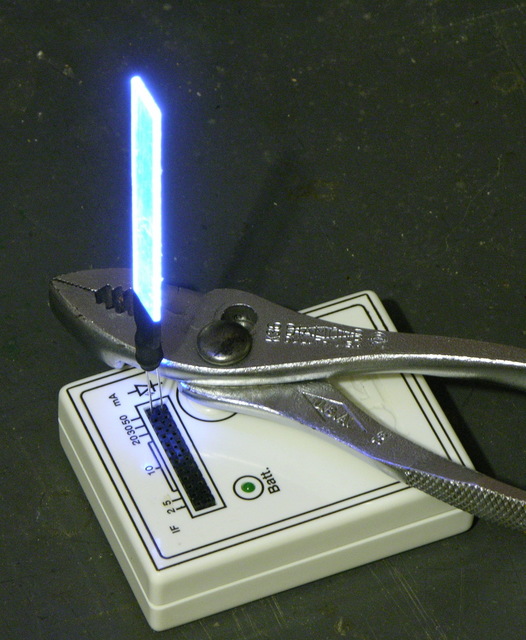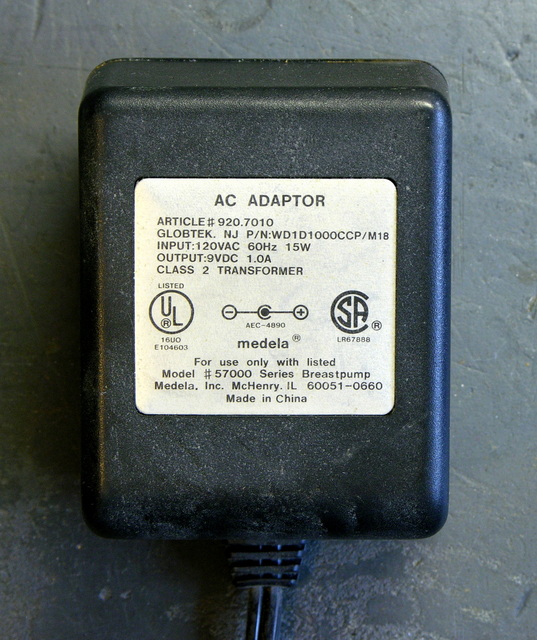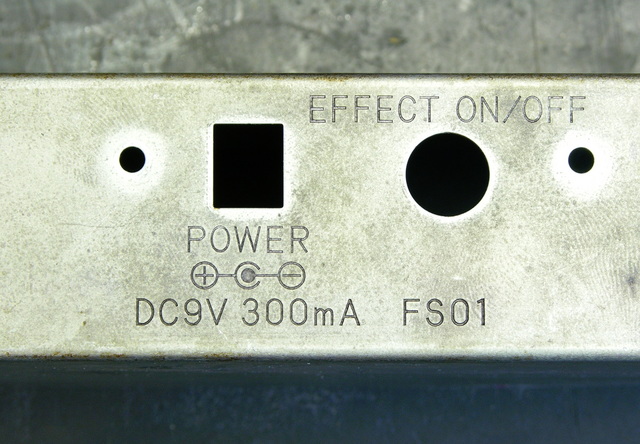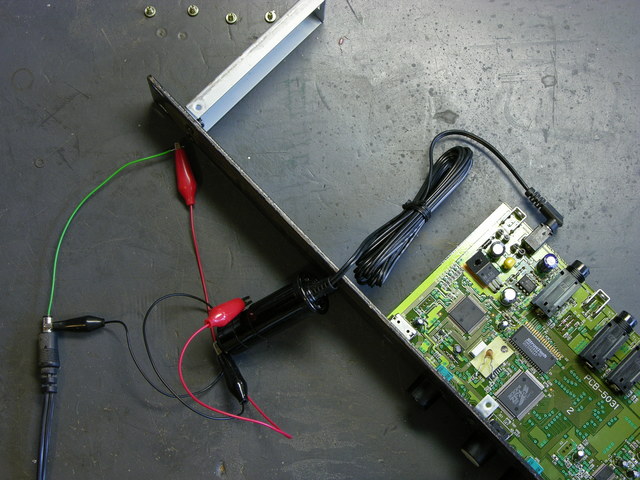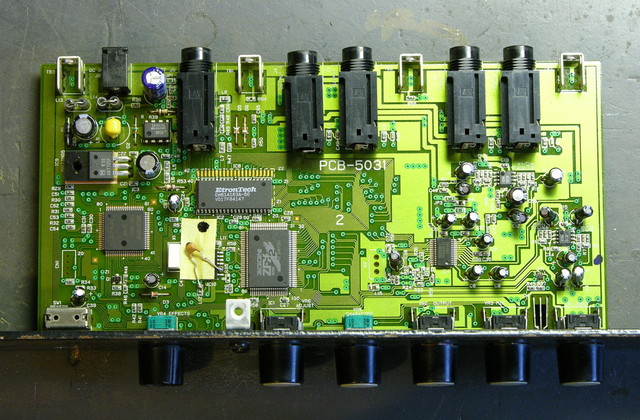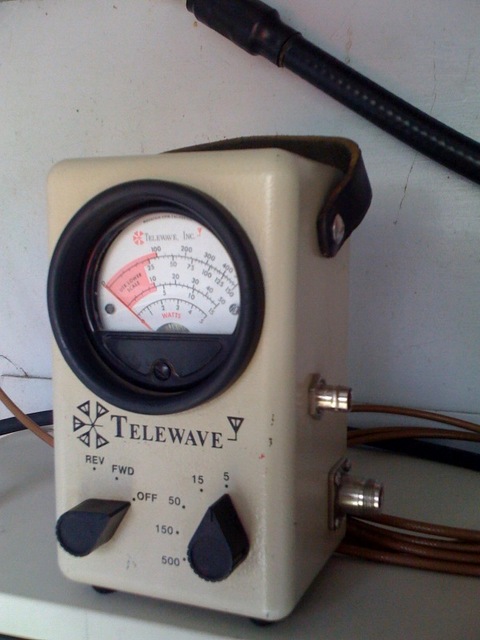I just bought an Akai Headrush E2 delay and looping effects pedal. It’s the box that the amazing KT Tunstall uses in her solo performances of “Black Horse and the Cherry Tree” to lay down her own rhythm and backing vocals before playing guitar and singing, all by herself. It’s a really slick setup.
I got a great deal on eBay — they retail for ~$200 and typically run about $150 on eBay, but I picked mine up for $76 missing the 9V power supply. It turned out to be an even better deal than I imagined, because the seller forgot to mention that the pedal came with a generous helping of organic matter, lovingly applied all over the pedal. This picture is after a preliminary 3x cleaning with Goo-Gone.
Not only was the case unsightly, but the foot switch action was dodgy as well, and that’s not easily cleaned from the outside. To really get the case clean, I wanted to get the panel loose of the controls so I could give it a good soak; to fix the buttons, I wanted to spray them with contact cleaner. I figured I may as well show off the inside while I had it open anyway.
There’s the upper PC board. Note the filth that crept down onto the mode select pushbutton, and even the potentiometers:
I had already got the outside of the lower case fairly clean, but wanted to clean the inside as well, so I went ahead and took both boards out. Here’s the lower PCB, where all the magic happens:
I actually had a plan for dealing with the filth. Goo-Gone is great at softening and removing sticky adhesives like the remains of the world’s largest velcro strip the former owner had attached to the bottom of the pedal; but there’s no cleaner like Fantastik for removing the evils that men have done from arcade game control panels and (apparently) guitar/keyboard effects boxes.
I gave the top case about a ten-minute soak in Fantastik — I had already soaked and scrubbed in Goo-Gone three times, mind — and after the soak it literally rinsed completely clean under the faucet, with the tiny exception of a little bit of gunk still in one of the potentiometer mounting recesses. The foot switches left behind a pool of brown liquid (and I had only sprayed the mounting threads), the potentiometer knobs had white inset lines again, and the washers that I’d had to pry loose of the case with my knife were clean and shiny.
I also used an “acid brush” (dry, no cleaner) to knock the accumulated dust and grit loose of the PC boards around the base of every component that penetrates the top cover and get the boards nice and clean again.
The pushbutton foot switches aren’t quite sealed, and I was pretty sure I could see in to the inside along the solder lugs. I sprayed with wiper cleaner/lubricant, worked the switches a bunch of times, and repeated the spray/work process twice more. Shiny!
Same pedal reassembled about an hour later, with towel lint added for your viewing pleasure.
And remember, folks, you can’t go around calling yourself anal-retentive if you don’t bother to align your fasteners.
The pedal now works perfectly — no more double-taps from switch bounce and missed taps from stickiness, etc.
It makes such a difference that before cleaning, I couldn’t understand the operating instructions (because the pedal didn’t seem to be doing what they seemed to be saying), and afterward they’re much more clear (although incomplete in failing to mention that it does not record while you’re tapping the tempo in delay mode, pity; and confusing, incomplete, and inaccurate in their description of looping mode operation; but who, bitter, me?).
Seriously, after an order of magnitude shorter time poking around than I had already done before cleaning, I feel pretty comfortable that I understand how to get it to do the things I want to do. Using the delay mode, I can now play a pretty passable rendition of the “Fly Like an Eagle” synthesizer intro. Wonder what to tackle next . . .
